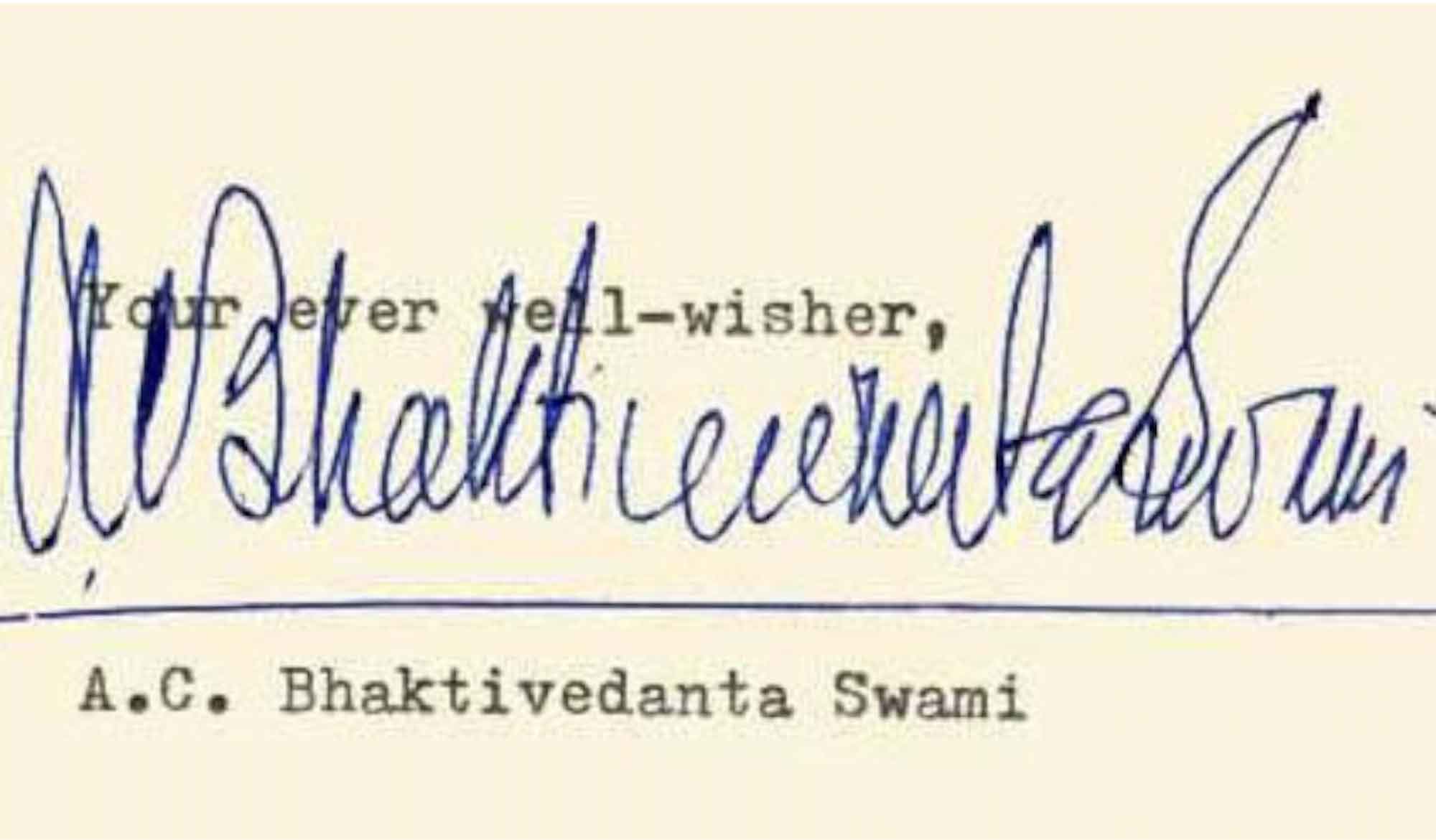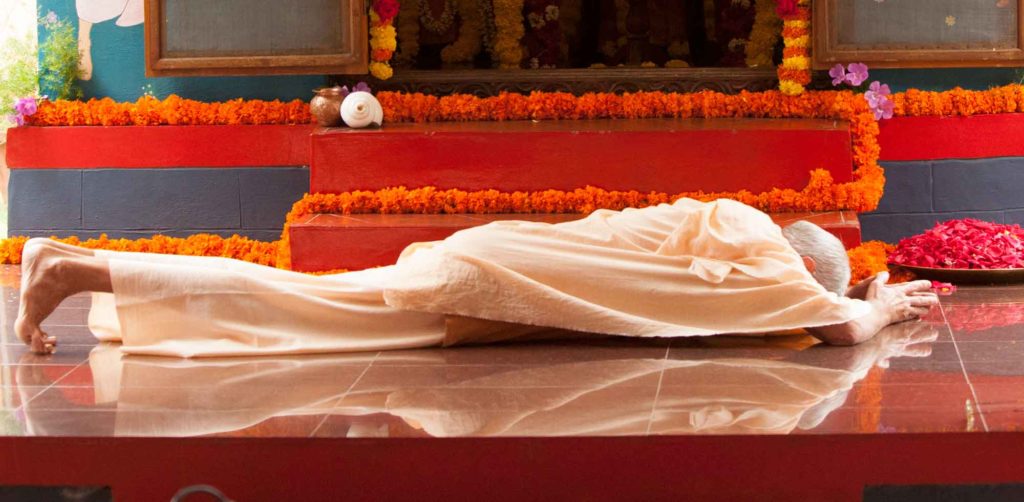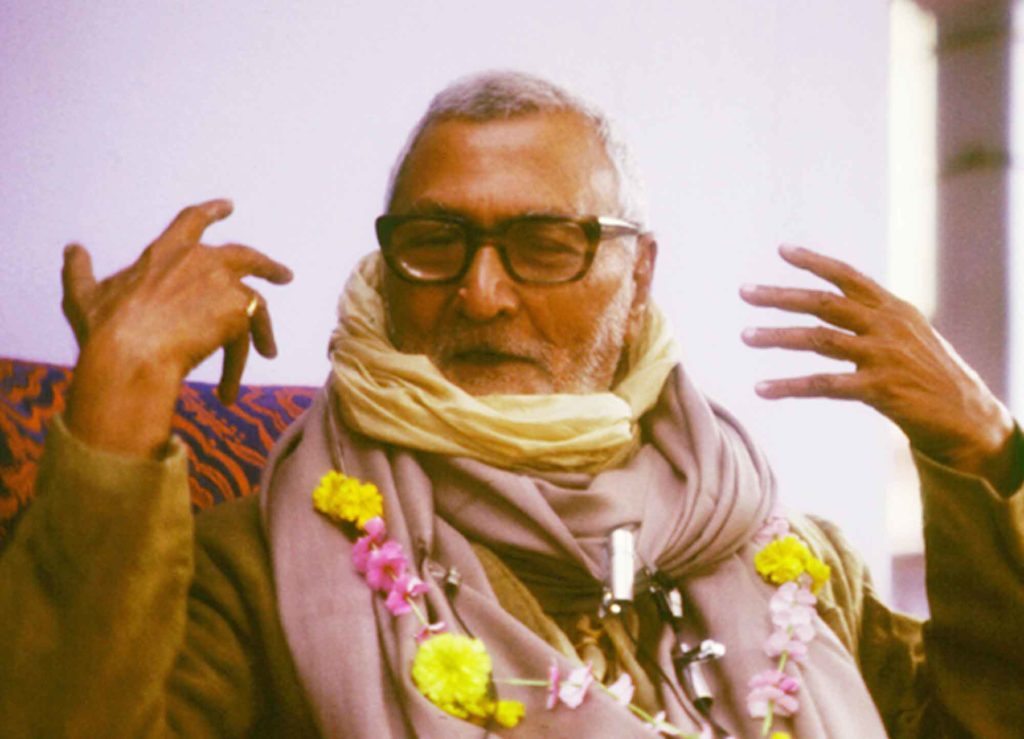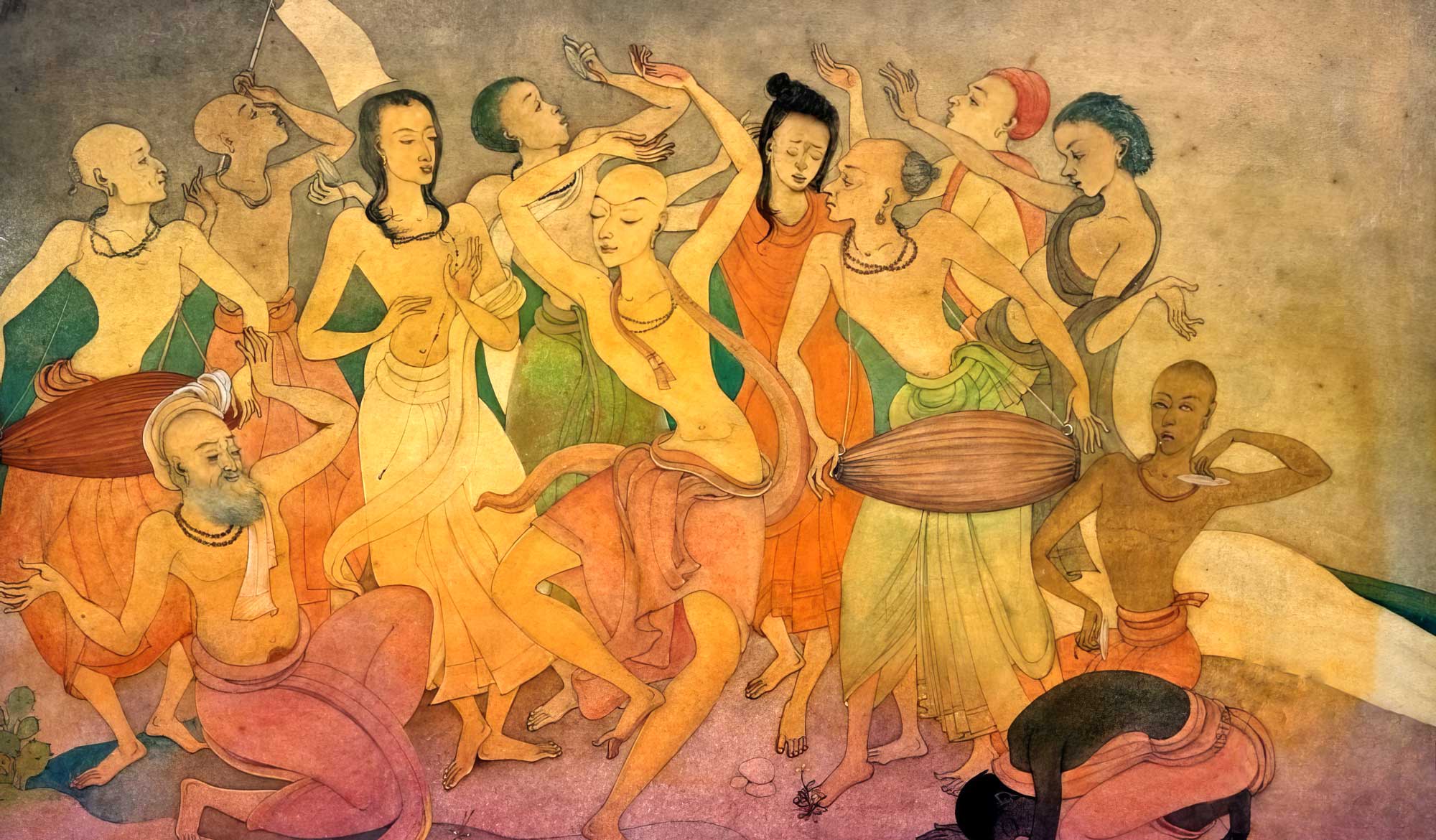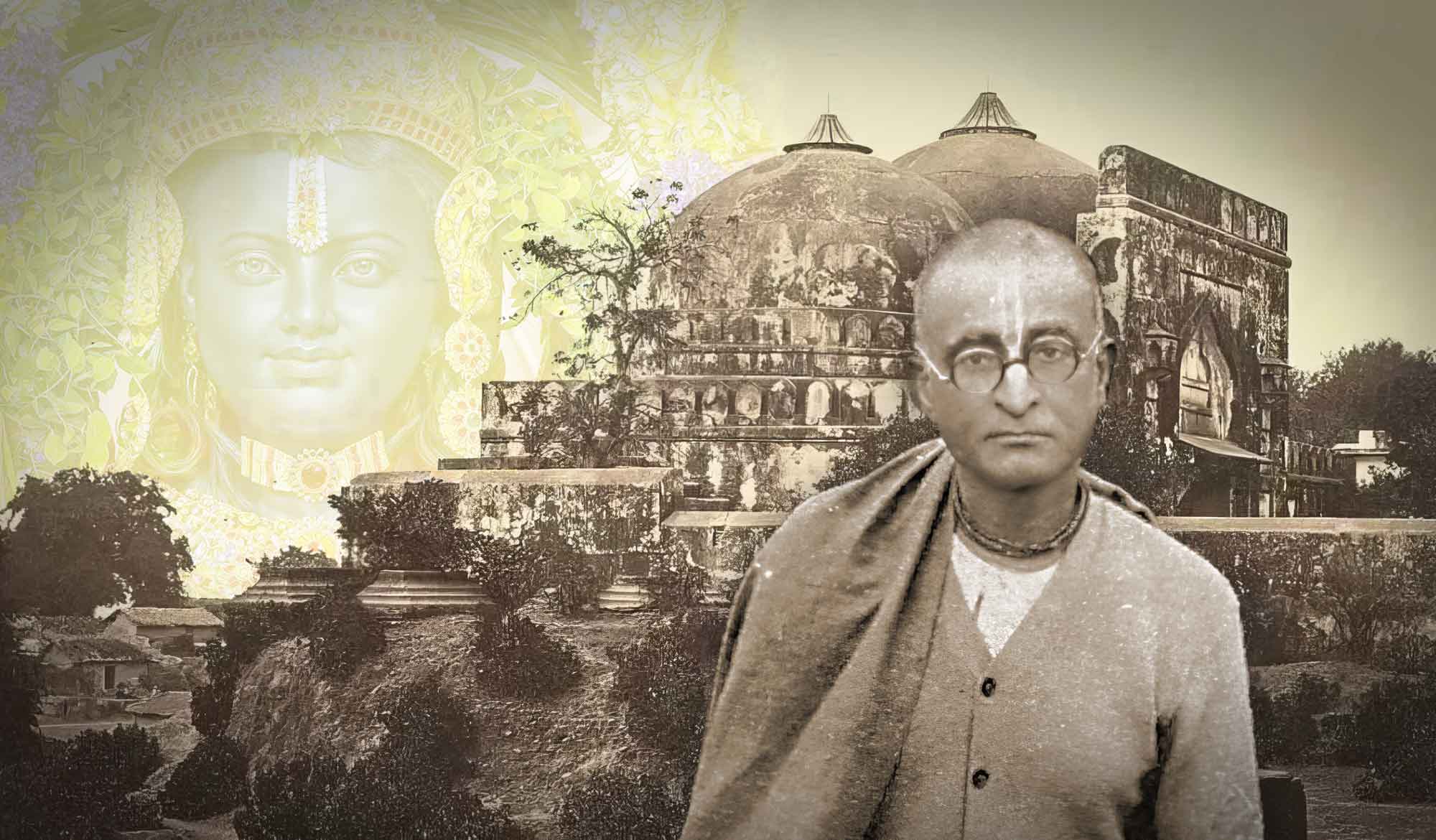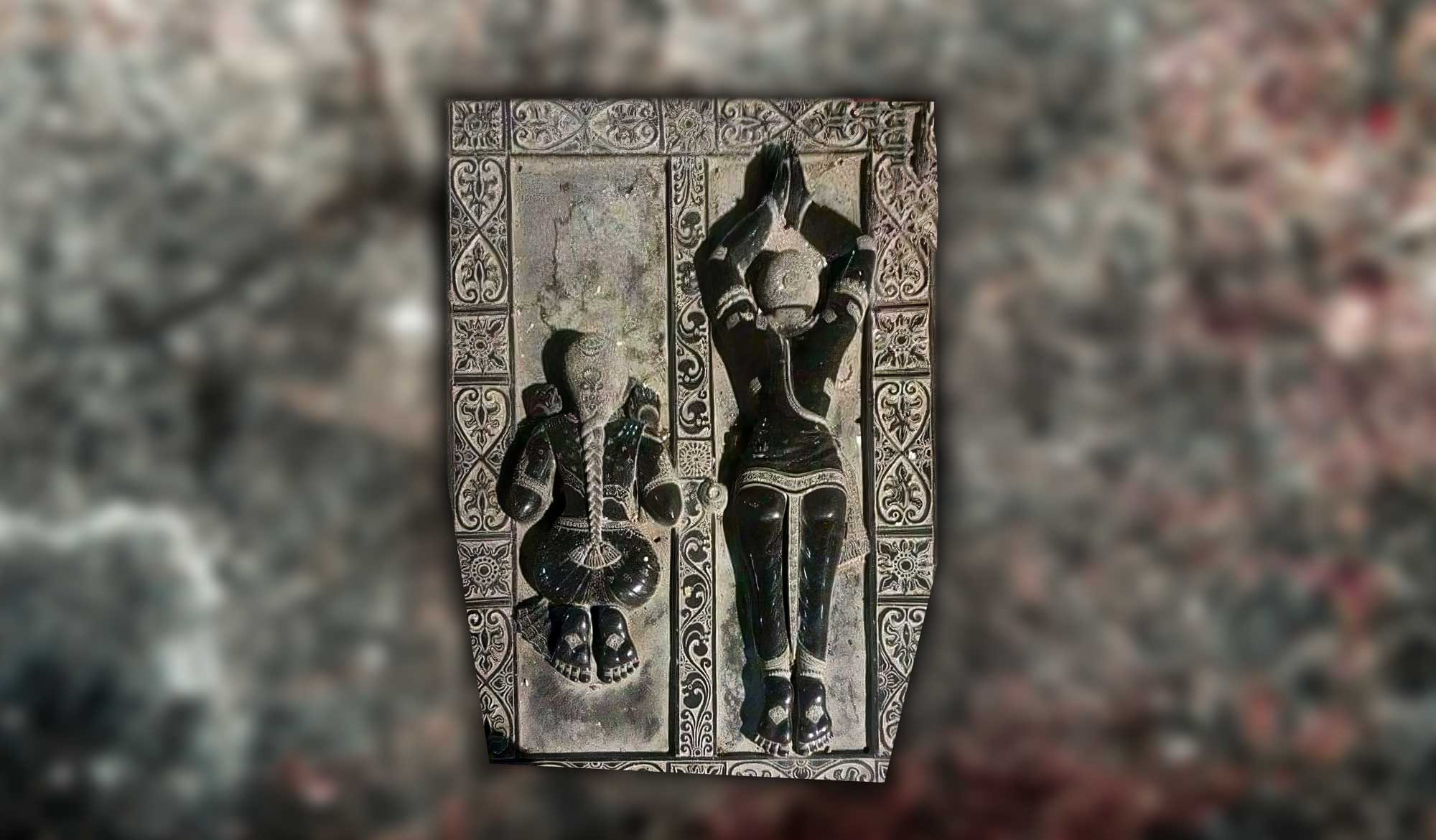Overview
In ‘Bhaktivedānta,’ written in 2002, Śrīla Narasiṅgha Mahārāja explains the history of Śrīla Prabhupāda’s name which was changed several times after the disappearance of his guru – each one is important and with a deep-rooted meaning that is rarely understood or appreciated.
Question: We have heard it said that Śrīla Prabhupāda (A.C. Bhaktivedānta Swami Mahārāja) received the name ‘Bhaktivedānta’ from his guru, Bhaktisiddhānta Sarasvatī Ṭhākura. Others have said that he received the name ‘Bhaktivedānta’ from Śrīla Śrīdhara Mahārāja and yet others are saying that he received the name ‘Bhaktivedānta’ from Bhakti Prajñāna Keśava Mahārāja. Can you please say something to clarify this issue?
Narasiṅgha Mahārāja: When our Guru Mahārāja (Śrīla A.C. Bhaktivedānta Swami Prabhupāda) was initiated in 1933 he received both hari-nāma and mantra-dīkṣā at the same time. At his initiation Śrīla Bhaktisiddhānta Sarasvatī Ṭhākura named our Guru Mahārāja, Abhaya Caraṇāravinda Dāsa, meaning ‘one who is fearless, having taken shelter at the lotus feet of the Supreme Lord.’ Śrīla Sarasvatī Ṭhākura did not confer any other names or titles upon our Guru Mahārāja during his lifetime.
In later years, after the disappearance of Sarasvatī Ṭhākura, our Guru Mahārāja was engaged in writing articles for a Bengali journal published by his god-brother, Bhakti Sāraṅga Gosvāmī Mahārāja. Gosvāmī Mahārāja and other leading Vaiṣṇavas of the time were so impressed with the writing and preaching capabilities of our Guru Mahārāja that Gosvāmī Mahārāja conferred upon our Guru Mahārāja the title ‘Bhaktisiddhānta.’* This was indeed the most honorific title a disciple could ever expect to receive – the very title of his guru.
*When registering the League of Devotees in Lucknow during the early 1950’s, our Guru Mahārāja referred to himself in that document as “alias Abhaya Charanaravinda Bhaktisiddhānta Das Adhikary” and his signature can be seen on the original document (Bhaktivedānta Archives).
According to the practice of name giving and awarding titles to deserving disciples, Śrīla Bhaktisiddhānta Sarasvatī Ṭhākura had never given the name of his gurus, Gaura-kiśora Dāsa Bābājī Mahārāja or Bhaktivinoda Ṭhākura to anyone. Accordingly, some of the senior disciples of Śrīla Sarasvatī Ṭhākura thought that the title ‘Bhaktisiddhānta’ should not be given to any disciple, however deserving. This matter was discussed among the senior Vaiṣṇavas with whom our Guru Mahārāja was regularly associating and, in a mood of deep respect and harmony, it was decided that our Guru Mahārāja would be given the title ‘Bhaktivedānta.’
During those discussions it was recognised by all present that our Guru Mahārāja was a stalwart preacher in the line of Śrīla Bhaktisiddhānta and that the inspiration of Bhakti Sāraṅga Gosvāmī Mahārāja to bestow an honorific title upon our Guru Mahārāja was directly inspired by Sarasvatī Ṭhākura.
In the days of Sarasvatī Ṭhākura, certain senior disciples were often called upon when some particular point or issue was in need of clarification – Śrīla Śrīdhara Mahārāja was amongst those select few disciples of Sarasvatī Ṭhākura who were able to clarify even the most difficult points of spiritual understanding.
In the discussion where the honorific title for our Guru Mahārāja was being discussed, Śrīla Śrīdhara Mahārāja suggested that our Guru Mahārāja be given the title ‘Bhaktivedānta.’ The name ‘Bhakti-siddhānta’ and ‘Bhakti-vedānta’ are synonymous in meaning. Thus the adjustment was made in keeping with the original inspiration felt by Bhakti Sāraṅga Gosvāmī.
From that time on our Guru Mahārāja became known amongst his god-brothers as ‘Bhaktivedānta.’ This occurred in Calcutta in 1947.
Some persons may look upon this event in our contemporary Vaiṣṇava history as being of little significance – the simple act of bestowing an honorific title upon a Vaiṣṇava. But apparently it was not so for everyone – the event was so spiritually moving that Bhakti Prajñāna Keśava Mahārāja decided for the future to name all his sannyāsī disciples ‘Bhaktivedānta’ – a title synonymous with ‘Bhaktisiddhānta.’ This standard is still carried out amongst the disciples of Keśava Mahārāja more than half a century later.
So, in contemporary times, our Guru Mahārāja was the first person in the line of Bhaktisiddhānta Sarasvatī Ṭhākura to receive the title ‘Bhaktivedānta’ (1947).
In 1959 when our Guru Mahārāja accepted sannyāsa, Keśava Mahārāja retained our Guru Mahārāja’s title ‘Bhaktivedānta’ given by Śrīla Śrīdhara Mahārāja and then gave our Guru Mahārāja the sannyāsa name ‘Swami,’ which was chosen from the list of 108 names of sannyāsīs authorised by Bhaktisiddhānta Sarasvatī Ṭhākura in Gauḍīya Kaṇṭhahāra. Thus, our Guru Mahārāja became known as ‘A.C. Bhaktivedānta Swami Mahārāja,’ or simply ‘Swami Mahārāja’ amongst his god-brothers.
Our Guru Mahārāja retained the initials ‘A.C.’ for Abhaya Caraṇāravinda from his first initiation, but officially his sannyāsa title and name was Bhaktivedānta Swami.
In the Gauḍīya tradition, a sannyāsī is called Swami and this is added as a prefix to the sannyāsa title like ‘Bhaktivedānta’ and the name of the particular sannyāsī follows such as Swami in the case of our Guru Mahārāja. However, if our Guru Mahārāja had strictly kept this tradition then his name would have been written thus: ‘Swami A.C. Bhaktivedānta Swami.’ In a letter to his disciple Rayarāma Dāsa, our Guru Mahārāja explained something of the complexities of his name as follows:
“So far the title ‘Swami’ is concerned, although this word is used generally for sannyāsīns, this ‘Swami’ is my particular name as a sannyāsī. Therefore, it must be suffixed at the end of my real name, A.C. Bhaktivedānta. So far the prefix ‘Swami’ is concerned, every sannyāsī has got to do that, but two ways ‘Swami’ (Swami A.C. Bhaktivedānta Swami) is not good looking. The end ‘Swami’ is necessary because it is my sannyāsa name. The first ‘Swami’ may be transformed into ‘Gosvāmī’, which is on the same order of Swami. Therefore, I use the prefix ‘Tridaṇḍī Gosvāmī’ and suffix ‘Swami’, as I have printed on my card enclosed herewith. That will be nice. In small lettering, it can be written above my name ‘Tridaṇḍī Gosvāmī.’ Vaiṣṇava sannyāsīns are known as ‘Tridaṇḍī Gosvāmīs’, and Māyāvādī sannyāsīns are known as only ‘Swami.’”
After the establishment of our Guru Mahārāja’s mission, the International Society for K®ṣṇa Consciousness, in the western world, our Guru Mahārāja stated in a letter to a senior disciple that he wanted all his qualified disciples to continue the title ‘Bhaktivedānta.’ Due to the successful preaching campaign of our Guru Mahārāja, the title ‘Bhaktivedānta’ has now become famous all over the world with special reference to the ‘Bhaktivedānta Purports’ of Śrīmad Bhāgavatam.
There are now many ‘Bhaktivedāntas’ in different parts of our sampradāya, but as for fulfilling the purport of ‘Bhaktivedānta’ our Guru Mahārāja has set the standard in all respects and it is incumbent on other Vaiṣṇavas with this honorific title to live up to the standards that our Guru Mahārāja has set as a world-class preacher. Certainly one should beware of being a ‘Bhaktivedānta’ in name only.
Related Articles
- 📖 Prabhupāda Vijaya (Book)
- My Guru is Rādhārāṇī by Śrīla Bhakti Gaurava Narasiṅgha Mahārāja
- Become Guru! by Śrīla Bhakti Gaurava Narasiṅgha Mahārāja
- Purport to Śrīla Prabhupāda-līlā Smaraṇa-Maṅgala Stotram by Śrīla Bhakti Gaurava Narasiṅgha Mahārāja
- Mahāprabhu as Prabhupāda by Śrīla Bhakti Gaurava Narasiṅgha Mahārāja
- How Great is Śrīla Prabhupāda? by Śrīla Bhakti Gaurava Narasiṅgha Mahārāja
- A Few Words on the Rasa of Śrīla Prabhupāda and the ‘Suicide Squad’ by Śrīla Bhakti Gaurava Narasiṅgha Mahārāja
- The Prākṛta and Aprākṛta-līlā of Śrī Guru by Śrīla Bhakti Gaurava Narasiṅgha Mahārāja
- The Golden Age of the Saṅkīrtana Movement by Śrīla Bhakti Gaurava Narasiṅgha Mahārāja
- Bhaktivedānta by Śrīla Bhakti Gaurava Narasiṅgha Mahārāja
- The Disappearance of a Śaktyāveśa-avatāra by Śrīla Bhakti Gaurava Narasiṅgha Mahārāja
- Śrīla Prabhupāda – A Second Generation Devotee’s Perspective by Gaura Gopāla Dāsa
Prema Dhāma Deva Stotram with the Narasiṅgha Sevaka Commentary – Verses 61-65
In verses 61 to 65 of 'Prema Dhāma Deva Stotram', Śrīla Śrīdhara Mahārāja narrates the pastime of Śrī Caitanya at Caṭaka Parvata In Purī and explains how the scriptures produced by Brahmā and Śiva are ultimately searching for the personality of Mahāprabhu who is merciful too all jīvas, no matter what their social position.
Prabhupāda Śrīla Sarasvatī Ṭhākura’s Visit to Ayodhyā
With the forthcoming observance of Śrī Rāma Navamī, we present 'Prabhupāda Śrīla Sarasvatī Ṭhākura’s Visit to Ayodhyā' written by Śrīla Bhaktisiddhānta Sarasvatī Ṭhākura Prabhupāda from The Gaudīyā magazine, Vol 3. Issue 21/ In December 1924, after visiting Benares and Prāyāga, Sarasvatī Ṭhākura visited the birth-site of Śrī Rāmācandra in Ayodhyā.
Śaraṇāgati – The Only Path to Auspiciousness
In this article, 'Śaraṇāgati - The Only Path to Auspiciousness', Dhīra Lalitā Dāsī analyses the process of śaraṇāgati (surrender) beginning with śraddhā (faith). She also discusses the role of śāstra and the Vaiṣṇava in connection with surrender.
Ātma Samīkṣā – The Value of Introspection
In this article, "Ātma Samīkṣā – The Value of Introspection" Kalki Dāsa highlights the importance of introspection in the life of a devotee and especially in relation to the worldly environment that surrounds us. He also explains how transcendental sound influences our capacity to introspect.
Prema Dhāma Deva Stotram with the Narasiṅgha Sevaka Commentary – Verses 61-65
In verses 61 to 65 of 'Prema Dhāma Deva Stotram', Śrīla Śrīdhara Mahārāja narrates the pastime of Śrī Caitanya at Caṭaka Parvata In Purī and explains how the scriptures produced by Brahmā and Śiva are ultimately searching for the personality of Mahāprabhu who is merciful too all jīvas, no matter what their social position.
Prabhupāda Śrīla Sarasvatī Ṭhākura’s Visit to Ayodhyā
With the forthcoming observance of Śrī Rāma Navamī, we present 'Prabhupāda Śrīla Sarasvatī Ṭhākura’s Visit to Ayodhyā' written by Śrīla Bhaktisiddhānta Sarasvatī Ṭhākura Prabhupāda from The Gaudīyā magazine, Vol 3. Issue 21/ In December 1924, after visiting Benares and Prāyāga, Sarasvatī Ṭhākura visited the birth-site of Śrī Rāmācandra in Ayodhyā.
Śaraṇāgati – The Only Path to Auspiciousness
In this article, 'Śaraṇāgati - The Only Path to Auspiciousness', Dhīra Lalitā Dāsī analyses the process of śaraṇāgati (surrender) beginning with śraddhā (faith). She also discusses the role of śāstra and the Vaiṣṇava in connection with surrender.
Ātma Samīkṣā – The Value of Introspection
In this article, "Ātma Samīkṣā – The Value of Introspection" Kalki Dāsa highlights the importance of introspection in the life of a devotee and especially in relation to the worldly environment that surrounds us. He also explains how transcendental sound influences our capacity to introspect.


